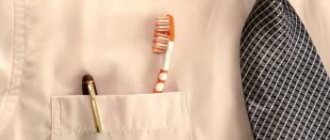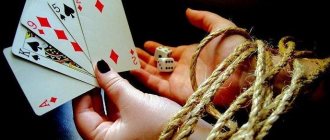In some diseases, the patient experiences a painful mental disorder, characterized by hostile thoughts and actions directed against his own personality. This condition is called auto-aggression. Self-destructive behavior can lead to dire consequences and cause death. To help patients suffering from this problem, the Leto mental health center prescribes specific treatment based on drug therapy and psychocorrection.
Causes of pathology
Auto-aggression is a painful response of the body to a critical situation.
Destructive behavior is caused by:
- Errors and deviations in raising a child. Constant humiliation, lack of love from elders, inflated demands, unfounded accusations and exaggeration of shortcomings, lack of attention, all of these formats can lead to the creation of a critical situation that destroys the threshold of stress resistance.
- Experienced violence, including sexual violence. An attack on a person often ends in self-destructive actions due to the resulting persistent stress.
- Fanatical devotion to ideas. Self-destruction can be driven by destructive religious faith, passion for aggressive esotericism, excessive love of diets, and the conviction of the need to increase physical activity to an exorbitant level.
- Dissatisfaction with professional employment. Often occurs when performing work that is contrary to existing desires.
- Family problems.
- Diseases that have a direct negative and powerful effect on the psyche.
- Hysterical personality accentuations.
PARENTS' MISTAKES
- Low level of trust and cohesion in the family. If parents and children do not support each other, constantly criticize and control, then the risk of auto-aggression in younger family members increases significantly.
- Dysfunctional family parenting style. Auto-aggression occurs in authoritarian, overprotective and permissive families, where control over the child is either greatly exaggerated or completely absent.
- Different parenting styles among parents. For example, an authoritarian mother and a liberal father can cause an intrapersonal conflict in a child, which he will try to resolve through self-harm.
- Family ban on showing emotions. By forbidding the child to stomp his feet out of anger and resentment, parents provoke him into self-aggression.
- Presence of a model of aggressive behavior in the family: dad is aggressive towards mom, mom is aggressive towards animals, parents are aggressive towards children. Observing the behavior of the parents, the child also becomes aggressive, and unconsciously chooses himself as the object of the outburst of anger.
- Lack of emotional contact with the baby. If parents do not understand his feelings, then he may begin to demonstrate them through auto-aggression.
- Inconsistent behavior of parents when communicating with their child. The child must clearly know what he can and cannot do. When a ban or permission is canceled a few minutes after voicing, the child also experiences an intrapersonal conflict.
Kinds
There are several classifications of auto-aggression. The doctor is primarily interested in the main component – the cause of the disease.
In accordance with etiological factors, the following forms of self-destruction are distinguished:
- Mental. It includes personality traits that, under the influence of internal and/or external stimuli, are reduced into self-destructive actions. The main manifestations are self-blame and self-abasement.
- Physical. The symptoms of this type of disorder are dominated by actions accompanied by violence against one’s body. The patient is capable of hitting himself, making punctures and cuts.
- Social. The patient isolates himself from communication and strives to become an outcast from society. At the same time, he has a paradoxical joyful reaction from the fact that people begin to react negatively to the sick person.
- Moral. Characterized by dependencies. Suffering from alcoholism or drug addiction, a person deliberately isolates himself from other people, undergoes self-exhaustion, and emotional devastation.
Establishing the characteristics of this nature allows the psychiatrist to take a more selective approach to the treatment of deviation.
Trigger
According to official data, about 5% of people worldwide suffer from trichotillomania. But this figure is inaccurate, since the lion's share of patients hide their addiction. People are able to hide their addiction for 20 years.
The majority of patients are women. More often, the disease debuts in childhood or adolescence, less often in the range of 20-30 years, and even less often after 40.
The development of the disease is based on the emerging feeling of tension and anxiety. The cause may be a guilt complex, fear, anger, anger and many other conditions that provoke a feeling of anxiety.
The skin where hair grows is well innervated thanks to a dense network of nerve fibers. This increases her sensitivity. A person who pulls out a hair feels pain. In this way, the patient switches attention from mental stress to physical sensations.
Self-inflicted pain acts as a way of self-punishment. Trichotillomaniac uses this method to relieve the stress that torments him. Endorphins, released under the influence of painful impulses, give a feeling of satisfaction, but only for a short time. Soon the feeling returns. The process is repeated.
There is an assumption that the disorder can also satisfy masochistic desires. Allegedly, the patient deliberately intensifies the pain in order to subsequently receive pleasure when the pain subsides. But this theory is just a guess.
Symptoms and complications
Signs of auto-aggression can be both direct and indirect. In any case, the manifestations of this painful phenomenon are based on self-destruction. Symptoms vary widely.
Direct autodestruction most often includes:
- Hitting your head against the wall, floor.
- Cutting and biting yourself.
- Tearing skin with nails.
- Hair pulling, etc.
Indirect self-harm looks like:
- Tattoos.
- Specially made scars.
- Wearing objects that disfigure the body.
Other manifestations of auto-aggression include:
- Suicidal direction - thoughts of suicide, planning, thinking about details, making attempts.
- Food form as part of anorexia and bulimia.
- Substance abuse, alcoholism and drug addiction.
- Fanaticism (religious, sports, political).
Extreme sports can become painful very quickly.
Delayed treatment leads to:
- Depression.
- Severe psychosomatic diseases.
- Traumatization.
- Infectious diseases.
- Lethal outcome.
What are the dangers of trichotillomania?
The consequences of the disease include physical and social impairment.
Among the physical consequences, it is worth highlighting the damage to the gastrointestinal tract that occurs when eating hair. During the process of trichophagia, a bezoar is formed in the stomach - a hairball. It causes a lot of inconvenience - from stomach pain to indigestion. The extreme of this disorder is called “Rapunzel syndrome” - a condition where a strand of hair extends from the stomach into the intestines.
Rapunzel syndrome is an extremely dangerous phenomenon that threatens the patient with death. A case was described in which a hairball weighing 4 kg was removed from a girl’s gastrointestinal tract.
In addition, eating hair affects the condition of tooth enamel.
Skin that is traumatized at the site where the hair follicle is pulled out can become infected. In addition, if you systematically remove hair in a certain area over a certain period of time, it grows more slowly. On the head, in the area of eyelashes, eyebrows, complete baldness becomes an aesthetic problem.
The absence of eyelashes provokes vision problems:
- inflammation of the eyelids, mucous membranes of the eyes;
- conjunctivitis;
- blepharitis;
- furunculosis;
- microtrauma of the eye.
Socially, the disease causes no less problems than physically. Patients realize the absurdity of their condition, hide their pathological tendencies and unattractive consequences. They try to fight, but it doesn’t work out well alone.
It is worth noting that society is poorly aware of the problem of trichotillomania. Therefore, an unevenly bald person without eyebrows and eyelashes involuntarily causes bewilderment and sarcasm on the part of others.
Self-flagellation and public bullying make trichotillomaniacs depressed and force them to isolate themselves from their surroundings, which threatens complete social isolation, loss of friendly contacts, and loss of self.
How to start treatment for auto-aggression at the Leto clinic
The contact phone number of our medical center is 8(969)060-93-93 . Before coming to us, call the number provided. The call center operates around the clock as a hotline. The dispatcher-registrar will answer all your questions and make an appointment with a doctor. If you need immediate help, you can come right away and you or your relative will be examined by the doctor on duty. If necessary, it is possible to transfer the patient from home to the clinic. It would be useful to remind you that all types of diagnostics and therapy are anonymous. The option to order a call back is available directly from the website.
KOMAROVSKY'S OPINION
Evgeniy Olegovich believes that a child’s aggression directed at himself cannot be ignored. He also suggests the following algorithm of actions during an attack:
- Physically stop the child. For example, if he swings to hit himself, confidently hold his hand.
- Offer an adequate way to let off steam, for example, hitting a soft sofa until it feels better.
- Express the child’s feelings: “you’re angry,” “you’re offended.”
- After the child has calmed down, have a calm conversation about the consequences of anger towards oneself and ways to adequately respond in a language that the child can understand.
Diagnostics
When making a diagnosis, great importance is attached to interviewing the patient and/or his relatives and answering questions. The conclusions obtained during the conversation are supported by inspection data. The psychiatrist tries to identify the root cause of existing disorders.
Psychodiagnostics is important. For these purposes the following are used:
- Questionnaires.
- Test methods.
- Questioning.
- Conversation with a psychologist.
- Treatment of auto-aggression
Some patients or their loved ones try to get rid of the existing problem on their own and spend a long time searching in different sources for the answer to the question: what to do. You should not waste time on self-diagnosis and self-medication - they often lead to loss of time and the appearance of serious (sometimes irreversible) complications.
At the first symptoms of auto-aggression, be sure to contact a psychiatrist. We try to find an individual approach to each patient. A treatment plan is drawn up after diagnosis. In this case, many factors are taken into account: the cause of the disease, its form, the severity of symptoms, weight, mental characteristics of the patient, etc. The treatment regimen for autoaggression includes only those techniques that provide the most effective results and the fewest side effects.
We use:
- Drug therapy.
- Psychotherapy.
- Medical and psychological rehabilitation.
Pharmacotherapy includes the following:
- Neuroleptics. Given in the presence of agitation, aggression, hysterical behavior, dangerous antisocial behavior.
- Sedatives. They are necessary to suppress phobias, mental attacks accompanying the disease and other manifestations accompanied by fears.
- Antidepressants. These drugs are required to eliminate clinical forms of depression. Selecting the most suitable one may take a long time. You will have to take it after discharge from the hospital.
- Symptomatic medications.
Psychotherapy methods:
- Individual conversations with a psychiatrist/psychologist.
- Sessions of persuasion and suggestion in reality.
- Hypnotherapy.
- Group and family psychocorrection.
- Art therapy.
- Cognitive behavioral therapy.
During the training, dominant mental ideas and reflexes are gradually eliminated.
Soil for the development of the disease
Trichotillomania is provoked by various reasons:
- Scientists are conducting research to confirm the genetic nature of the disease. It was found that the same gene, SLITKR1, was damaged in a number of patients.
- Trichotillomania becomes a manifestation of a number of other mental disorders - schizophrenia, depression, neurosis, dementia. It is a symptom of bipolar affective disorder. In most cases, pathological hair pulling is a compulsive action within the framework of OCD - obsessive-compulsive disorder.
- The disease provokes organic damage to the brain.
- Lack of serotonin becomes a provocateur of the disorder.
- Hormonal surges can rightfully claim a role in the occurrence of trichotillomania. The theory is confirmed by the fact that the disease flourishes in adolescence.
- The disorder often develops in people with a special personality type – suspicious, scrupulous, sensitive.
- Trichotillomania can be triggered by severe or prolonged chronic stress. The strongest emotional tension that arises during stress requires an outlet and finds it in such a perverted form.
Cost of services
| CONSULTATIONS OF SPECIALISTS | |
| Initial consultation with a psychiatrist (60 min.) | 6,000 rub. |
| Repeated consultation | 5,000 rub. |
| Consultation with a psychiatrist-narcologist (60 min.) | 5,000 rub. |
| Consultation with a psychologist | 3,500 rub. |
| Consultation with Gromova E.V. (50 minutes) | 12,000 rub. |
| PSYCHOTHERAPY | |
| Psychotherapy (session) | 7,000 rub. |
| Psychotherapy (5 sessions) | 30,000 rub. |
| Psychotherapy (10 sessions) | 60,000 rub. |
| Group psychotherapy (3-7 people) | 3,500 rub. |
| Psychotherapy session with E.V. Gromova (50 minutes) | 12,000 rub. |
| TREATMENT IN A HOSPITAL | |
| Ward for 4 persons | 10,000 rub./day |
| Ward for 3 persons | 13,000 rub./day |
| Ward 1 bed VIP | 23,000 rub./day |
| Individual post | 5,000 rub. |
| PETE | 15,000 rub./day |
This list does not contain all prices for services provided by our clinic. The full price list can be found on the “Prices” , or by calling: 8(969)060-93-93. Initial consultation is FREE!
Advice for people who want to get rid of self-aggression
- In case of severe nervous shock, an irresistible desire to hurt oneself, psychologists recommend trying to express your emotions on paper. Experiences can be expressed in the form of text or drawing and then destroyed.
- To calm down, you can take a hot bath, get a massage, or interact with your pets. Listening to your favorite music also helps.
- When a person feels apathy and inner emptiness, you can eat something with a bright taste or chat with a stranger: for example, you can talk anonymously on a psychological help forum.
- Anger and anger also cannot be suppressed: to release emotions, you can beat a pillow, shout, express emotions on a piece of paper, and then tear it up.
The help of loved ones to a person who is struggling with manifestations of auto-aggression cannot be underestimated. People around him can help him a lot, showing sincere support and care: it is very important that there is someone close and understanding nearby, someone who will never blame or judge him for showing emotions, who will help and support him in a crisis situation. A person who has taken the path of fighting auto-aggression should be praised more often, without allowing humiliating negative statements addressed to him.
The problem of self-destructive behavior is of particular social significance, because often self-aggression becomes the cause of destructive phenomena in society, brutal murders and immoral behavior.
Forecast and preventive measures
When undergoing full therapy and following all medical recommendations, prognostic expectations are quite favorable. A number of patients ask our psychiatrists how to completely get rid of a possible relapse of auto-aggression in the future. We offer them to undergo rehabilitation - a set of restorative and preventive measures that consolidate the results of treatment.
If you have a problem and you don’t know how to treat it, contact our Leto mental health center. Call 8(969)060-93-93 and we will make your well-being easier as soon as possible.
PSYCHOLOGIST'S RECOMMENDATIONS
Preventing auto-aggression, like other disorders, is much easier than correcting it. Therefore, the first thing to do is to pay attention to the situation in the family. Are all family members friendly to each other? Does the baby go to his parents to share his experiences? Are parents ready to support their child in any situation and try to help him in any problem, be it a mere trifle or a serious tragedy?
- If auto-aggression does begin, it is necessary to minimize or eliminate situations in which it occurs. Otherwise, it may become entrenched in habitual behavior, and then correction will become much more difficult.
- During an attack, it is important to follow the algorithm: protect, let off steam, express feelings, talk about what happened.
- If parents feel that they cannot cope with their child’s auto-aggression on their own, they should turn to specialists. With this problem, you can go to a psychologist, neurologist, psychotherapist or psychiatrist.
- It is important to begin correcting self-aggressive behavior as early as possible, since the longer a child lives with this disorder, the more difficult it is to treat.










